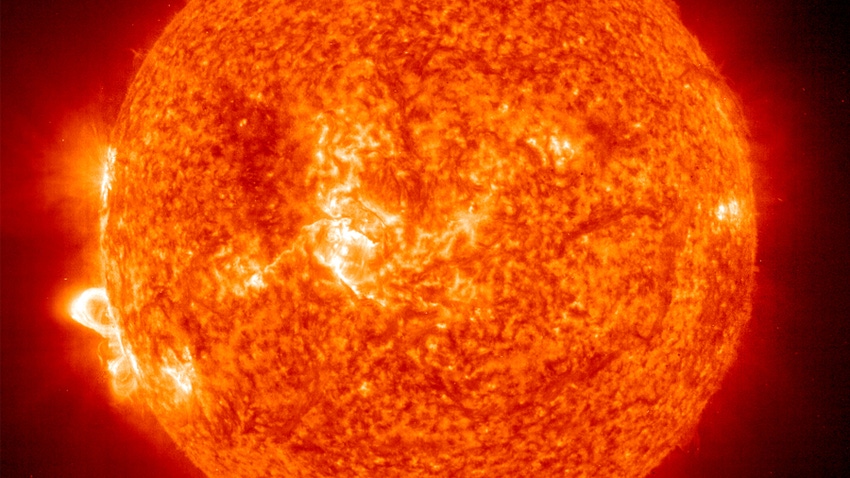August 11, 2023

by Pat Melgares
If you think the odds of being negatively affected by an event that happens every 11 years are long, just think about one that happens every 100 to 200 years.
For farmers using GPS technology — and there are a lot of them — those probabilities are becoming a lot more likely, according to officials at Kansas State University and the University of Minnesota.
K-State precision agriculture economist Terry Griffin notes that Earth may soon feel the effects of a solar maximum, or that period in the sun’s 11-year solar cycle in which humans can observe the highest number of sunspots, which are generally associated with more solar flares and an increase in geomagnetic storm activity.
During sunspot maximums, the Earth is likely to experience an increase in the Northern and Southern Lights, and disruptions to radio transmissions, power grids and numerous GPS-backed technologies.
“If we think back about 11 years, well, we did have GPS, but we did not rely on it as much as we do today,” Griffin said.
Big impact
In a Feb. 2023 report, the USDA Economic Research Service reported that a majority of row crop acreage in the United States was managed using auto-steer and guidance systems — as much as 72.9%, compared to 5.3% in 2001.
The report, which Griffin co-authored, also indicates that GPS applications are used on 40% of all U.S. farm and ranchland acreage. The precision agriculture market is projected to reach $23,056 million by 2030, according to a report from Allied Market Research.
Griffin said an increase in geomagnetic activity heightens the chance for an ionospheric scintillation, which can prevent a GPS receiver from locking on to a signal and make it impossible to calculate a position.
“When these events occur,” he said, “it can be quite annoying — more so than catastrophic for those areas, which may be as small as a county or a few counties, and it could last just moments or a few hours.”
“But when it’s a GPS signal you’re relying on, and it’s not getting a location fix in the middle of planting or spraying or even harvesting, it can be quite frustrating.”
Overdue
Kathy Draeger, the statewide director of the Regional Sustainable Development Partnerships at the University of Minnesota Extension, said Earth is also due for what is known as a Carrington Event, an intense geomagnetic storm thought to occur every 100 to 200 years.
The last Carrington Event on record happened Sept. 1-2, 1859, creating strong auroral displays (natural light displays that shimmer in the sky) that caused sparks and even fires in multiple telegraph stations.
But, Draeger noted, “Unless you were a telegraph operator in 1859, you may not have even known there was a solar flare.”
Nearly 164 years since the last Carrington Event, the impact could be a lot more intense the next time around.
“We’ve increased our reliance on technology for everything,” Draeger said. “We know that farmers are dependent on technology more and more, and at the same time, we have a growing awareness that there may be vulnerabilities to our dependence on some of that technology.”
Potential damage
Griffin and Draeger are co-authors on a report that will soon be available through the Extension Disaster and Education Network to discuss the potential impact of space weather on agriculture.
“You know, I think about it this way: What if the technology that we’ve grown accustomed to goes away?” Griffin said. “It’s going to be annoying, frustrating, [though] maybe not catastrophic if we have to take a day off and make up planting sometime in late May instead of mid-April.
“But there will be yield penalties for doing so. And if every farm operation in Kansas has to do that, well, that’s a bunch of bushels that are no longer available for marketing. There will be implications. … not only for farm operations, but it can also affect grain elevators, traders and others. It’s going to have a ripple effect on America’s agricultural industry.”
Draeger said she and Griffin are hoping to “define the problem … and the potential impacts it will have.”
“One of the things I’m interested in is … the economic impacts, as well as the supply chains for food and agricultural products. I’m interested in how we keep the system resilient, as well. What do we need to do to make sure the electrical grid is prepared to handle different levels of solar storms?”
Draeger added that numerous groups already are involved with making electrical grids more resilient in the face of solar storms. “Their efforts will go a long ways in helping farmers to keep producing their food,” she said. “I’ve brought this up in meetings with government agencies, and we’re all trying to make sure that we’ve got a system that allows the food supply to continue to work as efficiently as it currently does.”
Griffin recently spoke on USDA Radio about trends regarding producer’s adoption of precision agriculture methods and use of digital tools. That interview is available online.
Griffin can also be contacted by email, [email protected], or on Twitter, @SpacePlowboy.
Melgares writes for KSRE News Service.
Source: Kansas State Research and Extension News Service
You May Also Like




